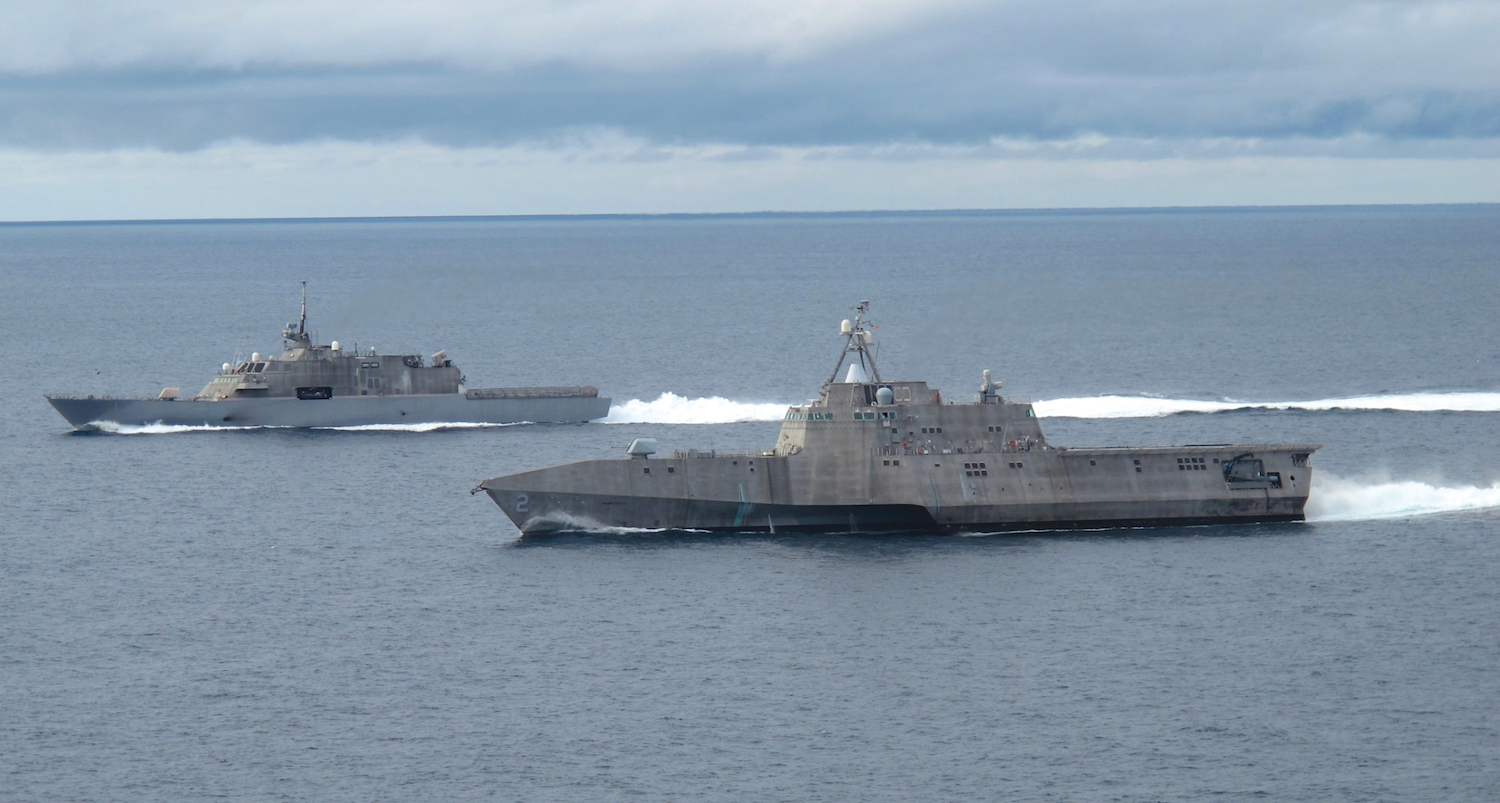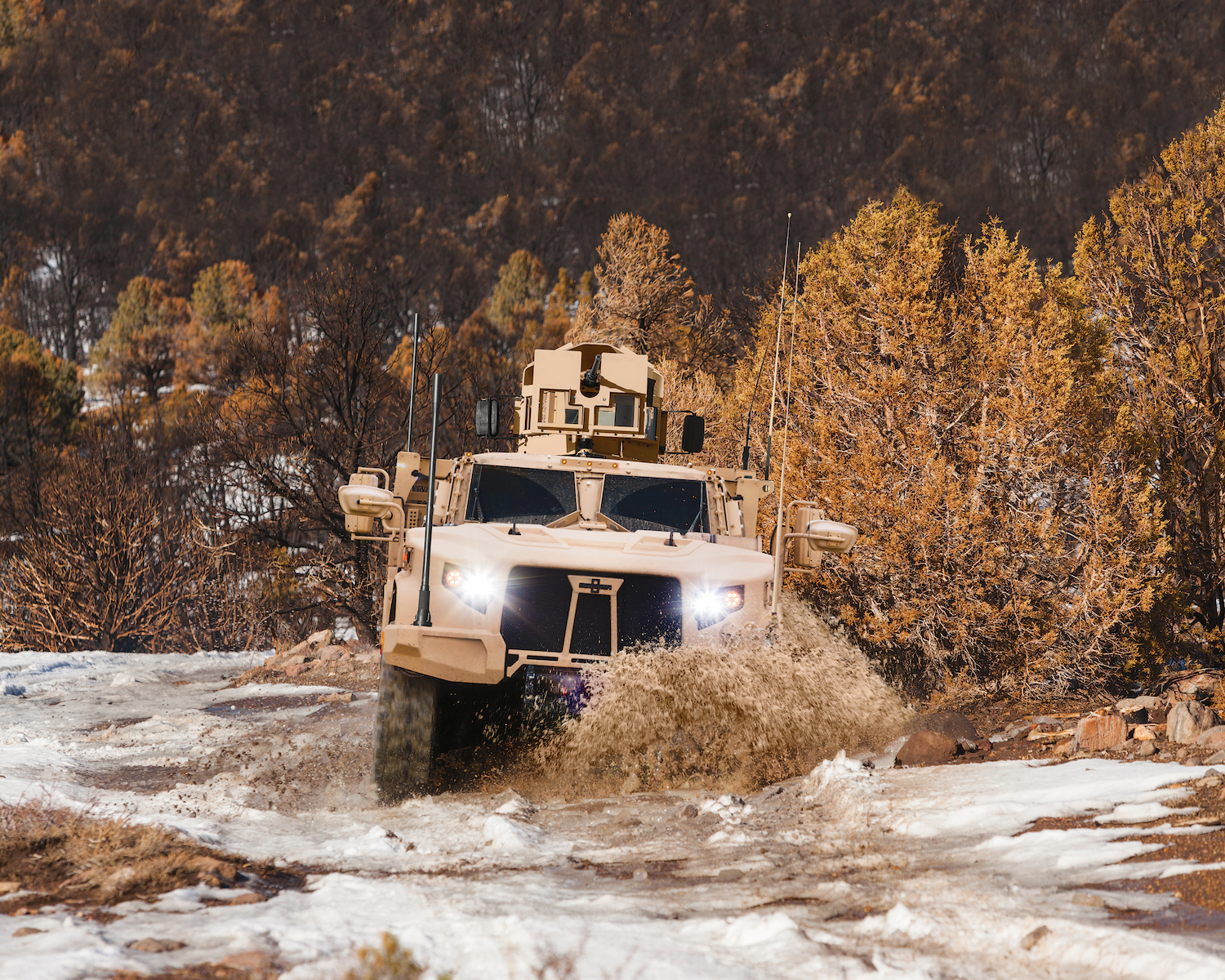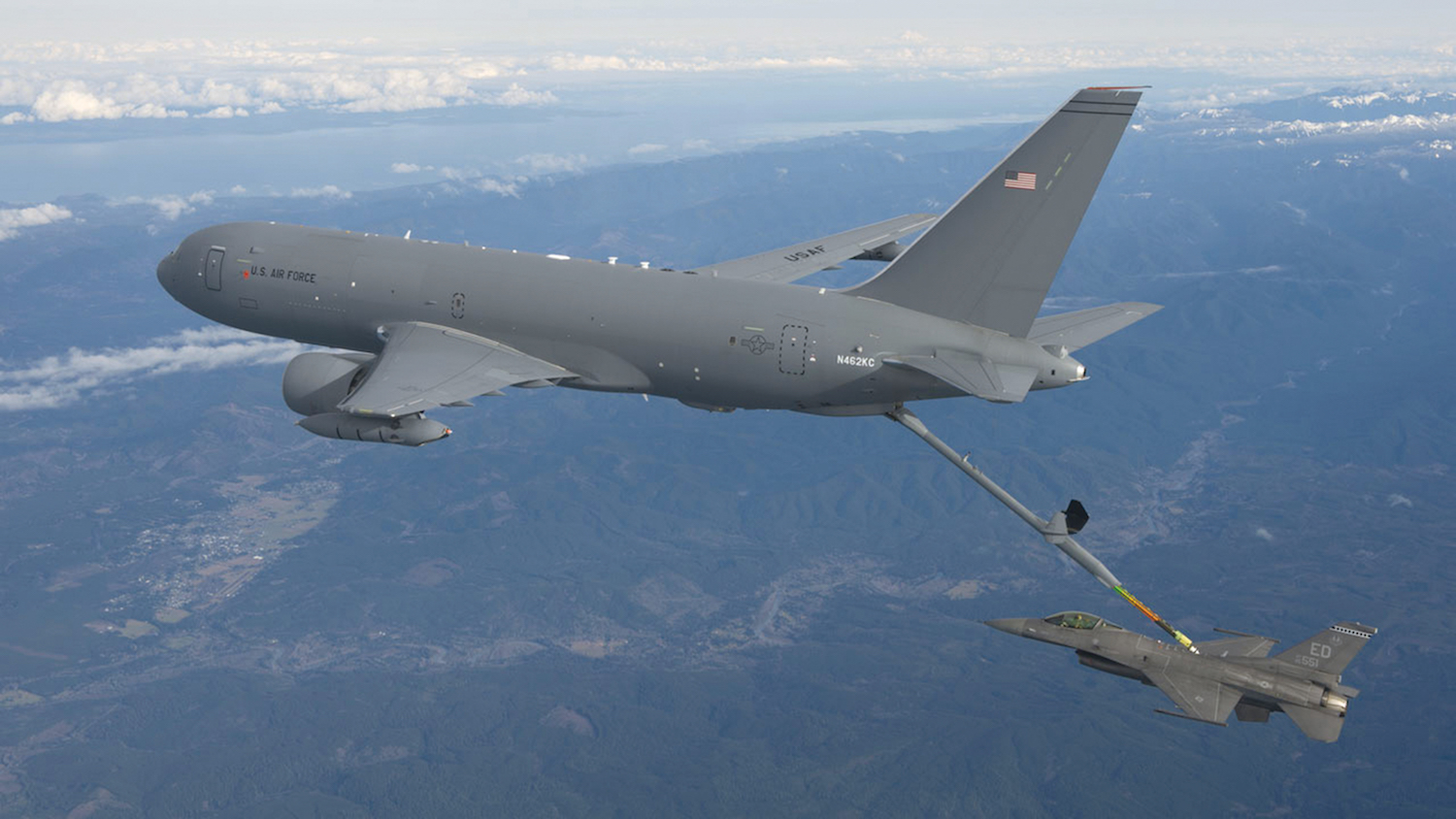Five years ago, the military-industrial complex went on high alert when it started to look like lawmakers would fail to avert sequestration budget cuts.
Pentagon leaders marched up to Congress, arms stuffed with briefing slides showing giant red arrows pointing downward. The military’s ground force, they said, would shrink to its smallest size since 1940, and the Navy’s fleet would plummet to only 230 ships, the fewest since 1915.
Industry leaders waved layoff notices as they pleaded with representatives to avoid this catastrophe that would shutter manufacturing plants across the country. Generals painted the worst possible scenario of a military no longer able to defend the nation, especially noting the effect it would have on the war in Afghanistan if contracts and payloads were delayed.
Now, the military is entering its fifth fiscal year operating under sequester spending caps, and many of the sky-is-falling scenarios haven’t happened, thanks to a series of budget deals that provided some relief to both defense and non-defense spending.
Despite agreements meant to soften the blow, some areas missed the cushion. Readiness has been hardest hit, as personnel spending is ring-fenced and programs were protected by multi-year contracts.
An uptick in aviation crashes this year is proof, critics say, that the military is funding short-term priorities but leaving the long-term to languish, prompting some to warn that this is just the beginning of sequester’s damaging impact, which will get worse without another budget deal in fiscal 2018.
“I think there is plenty of reason to be worried about some of the predictions,” said Justin Johnson, an analyst with the Heritage Foundation. “In terms of readiness, they certainly have come to fruition, where you see across-the-board real combat readiness problems right now.”

The modernization of Army helicopters has been reduced or delayed, but has not ended. (DOD Photo)
When it comes to big-ticket programs, delays and cuts have done damage, but a string of budget deals means ships, aircraft and vehicles have mostly survived.
Read more in our sequester series:
• Sequester special report: Military men and women hardest hit
• Sequester special report: Defense industry preps for the worst
On average, cuts have been about half what they would have been without those budget deals, which has protected the Defense Department from the worst consequences.
“I think there was some hyperbole certainly involved in some of those predictions, and many of the worst case predictions still have not yet transpired,” Johnson said. “Part of what explains the mismatch is there have been slight increases to the caps as Congress has amended them.”
Budget deals
The decade-long sequester became a worst-case scenario through the Budget Control Act in 2011, and officially went into effect on March 1, 2013. Congress is putting its finishing touches on its fiscal 2017 policy bill, the fifth under sequestration. Without a grand bargain that satisfies all parties, the pain will be felt through fiscal 2021.
The ultimate goal of all this, and why it is supported by some fiscal hawks, was to save more than $1 trillion over the 10 years.
The Budget Control Act hits all departments and only a few programs are exempt, but it’s hit the military the hardest because half of total savings must come from the Defense Department.
Many of the worst predictions were based on drawing a straight line across the budget, but they ignored the fact that people would try to “minimize the pain of those consequences.”
Still, the sum appropriated through fiscal 2016 was $105.6 billion less than was projected in the fiscal 2011 defense plan, according to Katherine Blakely, a research fellow at the Center for Strategic and Budgetary Assessments.

Congress is putting its finishing touches on its fiscal 2017 policy bill, the fifth under sequestration. Without a grand bargain that satisfies all parties, the pain will be felt through fiscal 2021. (AP Photo)
Budget caps are set to come back at the full level set by the Budget Control Act in fiscal 2018, meaning lawmakers will be working to come up with a new budget deal that will likely need to provide equal relief for defense and non-defense to earn bipartisan support.
Johnson said it’s “pretty likely” that Congress will adjust the caps for the remaining years that the Budget Control Act is law. This could be done by putting more money into the overseas contingency operations account, which skirts the caps.
Or it could be done via another two-year budget deal like the one worked out by House Speaker Paul Ryan and Sen. Patty Murray in 2013, or a long-term deal that reforms entitlements and cuts spending, which is the outcome sequestration was designed to spur.
President-elect Trump has said he will undo the Budget Control Act once he’s in the White House, though he previously downplayed sequester cuts as “a very minor amount of the cuts that have to be made” in 2013.
“History shows that when America is not prepared is when the danger is greatest. We want to deter, avoid and prevent conflict through our unquestioned military dominance,” Trump said in September on the campaign trail.
It’s unclear if he’ll have support to undo budget cuts in Congress among fiscal hawks in his own party.
If Trump’s efforts fail, the Pentagon may have to face the funding levels it feared when predicting dire consequences.
The top brass, testifying in March to the Senate Armed Services Committee, said sequestration was the biggest challenge facing military readiness. They noted that some of the worst impacts of cuts today will be felt for years.

Lockheed Martin and Austal USA each are building a class of littoral combat ship. The total buy has been cut from 52 to 40 ships. (AP Photo)
“The ripple effect of that goes through the years,” Adm. Michelle Howard, vice chief of naval operations, said at the hearing. “You not only lose the maintenance time, but you lose qualification time for people, and that experience set can never be bought back.”
Sen. John McCain, R-Ariz., chairman of the Senate Armed Services Committee, said last month that the next Congress must start work “immediately” on ending sequestration in favor of a “strategy-driven defense budget.”
Johnson said grim predictions should not be played down. “I think there’s a bigger picture readiness problem as well, ” he said. “It’s not just about training and maintenance of an individual unit, it’s the military as a whole unit. Is it modern enough? Is it trained enough?”
Major programs
Readiness has, with good reason, been the buzzword about sequestration. The Pentagon struggled to find places to cut under tight budgets, since money can’t be taken out of the personnel account and it was difficult to find savings in modernization or procurement in the early years of the Budget Control Act when contracts were already in place, said Nora Bensahel, a distinguished scholar in residence at American University.
That left readiness accounts as one of the only places that savings could be found.
If there’s a silver lining, Johnson said it is that budget caps have led to more oversight and have driven reform efforts to cut waste and boost efficiency. But the trade-off is not worth the harm.
“I think there are some tangential benefits … but on net, this is not the time that we as a country should be shrinking and weakening our military,” he said.
Military leaders told lawmakers, however, that the cuts lead to an unpredictable fiscal environment where it can actually be more expensive to buy things and operate because it is impossible to plan for more than a year at a time.
“We’ve not had a stable fiscal environment for three years,” Gen. John Paxton Jr., the assistant Marine Corps commandant, told senators in March.

The Pentagon awarded the $6.7 billion contract to Oshkosh Defense for the military’s Humvee replacement in 2015. (Oshkosh Defense photo)
Here’s how major programs have fared under the budget caps, compared to predictions from then-Defense Secretary Leon Panetta in 2011:
F-35: Panetta warned that sequestration would lead to the termination of the Lockheed Martin Joint Strike Fighter program. The most expensive and ambitious program in history has faced its share of setbacks, from issues with the planes’ software that caused it to shut down randomly to problems with the $400,000 helmets that caused pilots to see a green glow at night.
Despite that, the Air Force and Marine Corps have already declared initial operating capability with the jet. The administration asked to buy 63 F-35s in fiscal 2017, but both chambers added jets in their versions of the National Defense Authorization Act. The House wanted buy 74, while the Senate bill wanted 67. The compromise bill authorizes the original purchase level of 63.
Johnson said the F-35 has “taken repeated production hits due to the caps,” and that a project to design a second engine for the next-generation joint strike fighter was axed due to tight budgets. Experts also predicted the total number of planes purchased could be less than what was planned because of the caps.
Army helicopter: Panetta predicted in 2011 that the sequester levels would force the Army to kill all of its helicopter modernization efforts. In reality, the modernization of Army helicopters has been reduced or delayed, but has not ended, said Todd Harrison, an analyst with the Center for Strategic and International Studies.
Some programs that badly need the investment are the Bell OH-58 Kiowa scout, which entered service in the late 1960s and was last updated in 1990, as well as the Army’s Future Vertical Lift capability, which could yield new technologies in coming decades.
More broadly, Army modernization has suffered because it doesn’t have large procurement coffers that it can cut to stay below the budget level and have more personnel costs than other services that also can be cut, Bensahel said. “People are extremely expensive, and it has more than others,” she said. “They can’t offset that by trading off cuts to modernization accounts.”
Bomber: Panetta told McCain in a 2011 letter that the Budget Control Act would force the Pentagon to terminate the program to build a new bomber and restart a new program in the mid-2020s. A contract for the B-21 bomber was awarded to Northrop Grumman in October 2015.

The Air Force is planning to buy 179 new tankers from Boeing, and the program has been one of the top priorities even amid tight budgets. (DOD Photo)
The Air Force announced last year that it intended to buy 80 to 100 of the new bombers, but reportedly revised that number this year to a “minimum” of 100 planes.
Littoral combat ship: Panetta predicted that the littoral combat ship would be terminated, but the program is still going, despite a reduced buy in the president’s fiscal 2017 budget request. But Defense Secretary Ash Carter announced last year that he supported cutting the total buy from 52 ships to 40, and the program has faced a series of setbacks, including breakdowns and engineering shortfalls this year.
The issues have reportedly resulted in major changes to the program, including retraining for sailors who work on the ships. Lockheed Martin and Austal USA are each building separate classes of LCS.
Zumwalt-class destroyer: Blakeley said the Pentagon may have had more patience for the issues raised in construction of the Zumwalt-class destroyer, built by General Dynamics Bath Iron Works, and as a result may have built more ships had there been more money available.
Most recently, the first-in-its-class destroyer suffered an engineering casualty in September ahead of its commissioning and broke down again in the Panama Canal.
ICBM: Panetta predicted in 2011 that the Pentagon would be forced to eliminate the intercontinental ballistic missile-leg of the nuclear triad to save money. In reality, the Air Force in August released its request for proposal to modernize the ground-based deterrent. Contracts are reportedly expected to be awarded by the end of fiscal 2017.
Columbia-class submarines: The Navy is reportedly set to buy 12 of the submarines to replace the Ohio-class ballistic missile subs, but officials have warned that the expensive program, which is expected to cost about $100 billion total, will eat up the Navy’s shipbuilding budget and leave nothing to purchase other ships and grow the fleet.
“If we have to fund the Ohio replacement out the topline, it will affect all” the Navy’s shipbuilding programs, Howard, the Navy’s vice chief, said at a Senate hearing in March.
Joint light tactical vehicle: The Pentagon awarded the $6.7 billion contract to Oshkosh Defense for the military’s Humvee replacement in 2015. The Army and Marine Corps have said they need more than 50,000 of the vehicles total, but experts warned that the number purchased could decrease because of sequestration and budgetary concerns.
“The impact will more than likely … be a slowdown of production, which equals a stretch out of production,” Col. John Cavedo Jr., program manager for the joint program office, reportedly said.
T-X trainer: The Air Force is planning to buy about 350 advanced trainers to replace the T-38 fleet, but Richard Aboulafia, the vice president of analysis at Teal Group, wrote in Aviation Week that funding is the biggest hurdle the program has to overcome, especially if sequestration caps come back at the level in the Budget Control Act in fiscal 2018. It still could face cuts if dollars get tight.
KC-46: The Air Force is planning to buy 179 new tankers from Boeing, and the program has been one of the top priorities even amid tight budgets. Frank Kendall, the undersecretary of defense for acquisition, technology and logistics, predicted in 2012 that sequestration would “break” the contract for the KC-46 and force the Pentagon to renegotiate, but the acquisition is moving forward as planned.
Carrier-based drone: Congressional critics of the Navy’s Unmanned Carrier Launched Airborne Surveillance and Strike program led to it being renamed the Carrier Based Aerial Refueling System, which will primarily serve as an unmanned tanker at sea.
The Pentagon is reportedly expected to issue the draft request for proposal to industry for the Stingray, as the program is called, by the end of this year. A Pentagon official told National Defense Magazine that budget toplines are the greatest threat to the new program.

